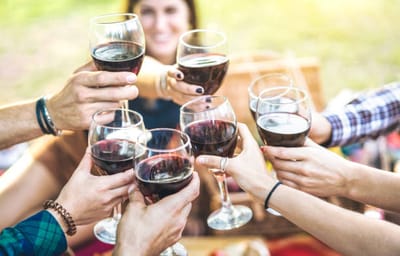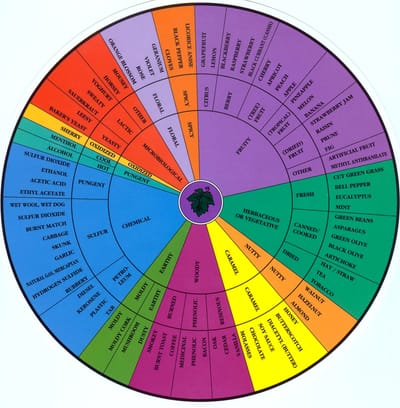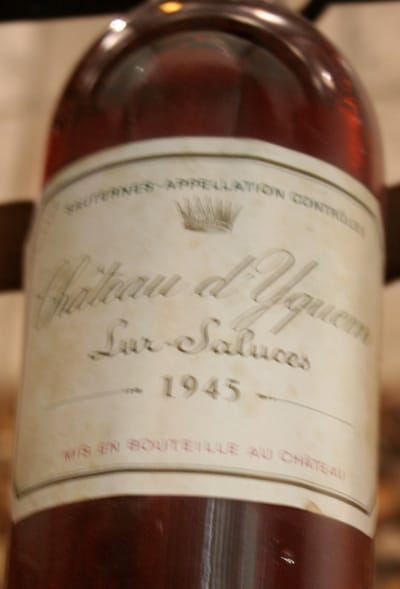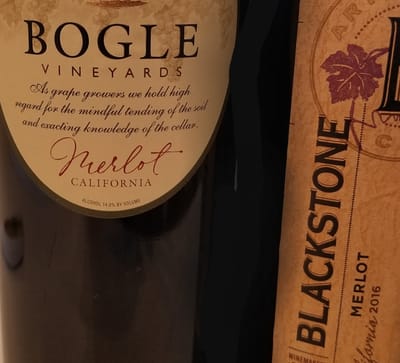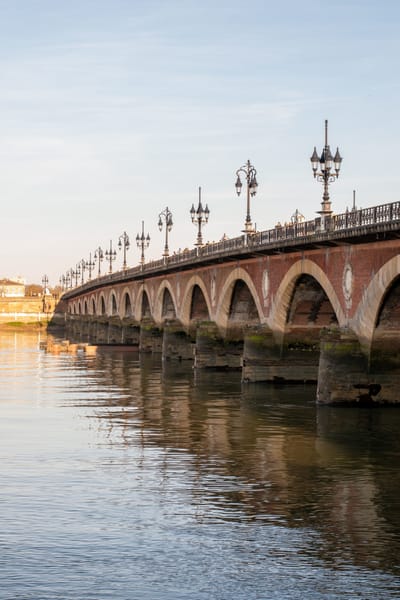How to easily organize a wine tasting party at home, 10 basic ideas to get you started. How to safely run a wine tasting. Complete with a wine tasting form to evaluate and record the wines tasted.
Read MoreWine Consultant to Sarasota, Tampa, Naples, Florida
Best Wine Advice Blog
Rick's Wine Consultancy LLC, Sarasota, Florida 34238
Best Wine Advice Blog
A review of the principal white wine varietals of the world and which are dry and which are sweet. The interplay of weather and grape varieties, wine laws and winemakers in producing wine and how sweet or dry. Potential sweetness of major grape varieties. White wine sweetness guide.
Read MoreAn easy method that gets you started on the road to being able to talk intelligently about wine and wine aromas. Soon you will not be just saying the wine tastes “good” but maybe “nutty” and will specify walnut? hazelnut? almond?
Read MoreWhat you need to know about aging of wine before you buy with advice to made sure you made the right choice. What to do if you make a bad choice of wine? The more the bottle costs you, the more caution you should exercise. I give you categories of cost and longevity.
Read MoreServices
 (Did anyone notice I resorted to a car jack to slowly decant a 6 Liter bottle of 1981 Charles Lefranc Monterey Cabernet at my daughter's day after the wedding party? The wine was made one year only and won the rematch of the Paris Competition in 1986)
(Did anyone notice I resorted to a car jack to slowly decant a 6 Liter bottle of 1981 Charles Lefranc Monterey Cabernet at my daughter's day after the wedding party? The wine was made one year only and won the rematch of the Paris Competition in 1986)
Who is Rick? I have always been a “wine guy”. My first attempt at wine making was at 14 years old. I did not have money and resources. I tried to make wine from the Concord grapes hanging from a backyard fence. I used plywood to duplicate “barrel aging”. The results were awful. I thereby learned the first lesson of wine: that there are no magic or cheap shortcuts to wine quality. More than most things in life, with wine, you tend to truly get what you pay for. The purpose of the website is to cut down the degree to which people overpay for or unknowingly abuse wine and to point towards the occasional bargain.
After pursuing a successful career in Europe as an academic in a British University, when I returned to America with a French wife, I decided to follow my first love, wine. Through it all, including in academe, I continued my home winemaking making anything from Cotes du Rhone to orange and raisin dessert wine. I have worked for wineries and been employed in every aspect of the industry: retail (Kappy's Liquors of Boston) and wholesale (McKesson, Branded Liquors and Martignetti Cos. of New England). I worked for small wineries and large wineries (Kendall-Jackson, Almaden, Fetzer-Bonterra etc,) importers and exporters including the time spent in Bordeaux as the export director of a major negociant at the time, AQA. (I discuss my experiences in Bordeaux in my Best Wine Advice Blog). I was at different times a Wine Manager for a wholesaler and a General Manager of a wholesaler, and was a representative and manager for winery sales for California and imported brands. My intention is to pass on to you, in shortened form, what I learned over those 35+ years of experience in the wine business. I don't have any agenda in giving my advice such as working for a store or a magazine that accepts advertising. I have written articles for publications such as Cruising World, The Wizard of Wines. I work only on your behalf.
For those of you already in the business:
Most businesses have a need for ideas to control the cost and quality of inventory. This is especially true in the wine business. I can certainly help you with successful ideas there.
If an on or off premise retailer, you can avail yourself of my services to perform an inventory audit and help to choose wine for a retail store or simply to organize your store to maximize sales and profits. I also write and analyze restaurant wine lists that accomplish what you intend from an image, sales and profit perspective.
I have a particular talent for tasting a wine and knowing how much longer it has "to live" under various conditions. I would love to give you an analysis of your inventory. It is helpful to have someone to focus on your inventory and give realistic solutions on moving through dead items or about to die items.
If you are a supplier, I would love to represent your brand and would be very flexible about what form that representation would take.
If you are a wholesaler, I can pretty much contribute to every facet of your business. Call me.
For the general public
I can help in so many areas ... a talk to your wine group, cellar selection, storage hints even advice on tastings.
Contact me by email at ricksmwu@gmail.com: interested parties in engaging my services only, please. I spend much of my time in the Sarasota, Florida area. The rest of the time I am in New England and Ontario, Canada.
Thank you.
 This time I did not have time to start from scratch so I started with grape juice and finished the wine with oak spirals!
This time I did not have time to start from scratch so I started with grape juice and finished the wine with oak spirals!
 I am also into cooking
I am also into cooking
Basic Wine Tips
Basic wine tips for beginners...and others!
 Why aging wine can be expensive
Why aging wine can be expensive
Sediment -- Be aware that older, more honestly or naturally made wines, throw a sediment. The older the wine the greater the sediment. Usually in 10 years; definitely in 15 years in reds and about 25 years in fine whites, you should see a sediment growing at the bottom of the bottle and collecting in the area they call the punt. It is why the older the wine, the more carefully you have to handle it. With age, all the tannins, sulfites and other harsh things to fall out of the wine. It is one reason, the older the wine, the better it tastes .... to a point! Wine is like everything, including our bodies and civilizations, it rises to an optimum point and then it inevitably declines. Keeping that in mind when you purchase wine will optimize your purchase. Sediment is a good thing! Think of the sediment as the smoothing out of flavors and calming down harshness.. (Also reference Aging in the tab marked Other Rules of Wine).
Sulfites -- Sulfites are a natural product of fermentation. Therefore, they are found in wine, yogurt, beer, vinegar etc. If you get headaches, it may not be sulfites but imbibing wines that are too young or wines that are too cheap! (Reference my comments above and about wine and sugar). At any rate, sulfites are measured in parts per million and generally a low sulfite wine will be around 35 PPM. American regulations require that American produced wine be 10ppm or less to be labeled sulfite-free. However, since sulfite levels fall off with age and the wine is tested at time of bottling; well, you be the judge of what you can tolerate and afford!
Resveratrol, Resveratrol, Resveratrol? -- It is my "Marcia, Marcia, Marcia" moment from the wine business. Resveratrol belongs to a class of compounds called polyphenols (anti-oxidants) which are present in wines. Yes, they are good for you but there is debate about how much is present in a glass or two, or how much good that glass or two will do in the grand scheme of things. There are counter claims you would have to drink a barrel or two to have any appreciative impact. I discovered resveratrol in the mid eighties. A health expert who spoke at a national sales meeting in the 90's "pooh poohed" my question about resveratrol which implied the compound had health benefits. At one point it was given as an explanation for The French Paradox: how the French lived so long despite and diet heavy in fats and lack of exercise. I leave it to you to decide but I must add I have never heard any one claim it is bad for you! The food industry has certainly come to embraced it and market it.
Tannin, Ketones and other Young Stuff -- Just as all things young tend to greater aggression and strength than the aged, certain young wines based on grapes full of tannin, such as the Cabernet Sauvignon grape from Bordeaux, will repeat this pattern . Tannin, for example, is found in vegetative matter and gives young wine, and strong tea for that matter, a puckering astringency you sense at the back of your palate. This tannin, along with ketones, color pigments and other things from the grape skins and seeds can dissipate and/or drop into the sediment with age, but when the wine is young, they remain for you to drink. They also contribute to dehydration, so beware of youth... but they fall away with age! I treat this topic at greater length in a blog article Is Your Wine Aging or Aged?
Water and Wine -- A good rule of thumb, especially when drinking young wine, is to have a glass of water for every glass of wine you consume. Otherwise, dehydration could lead to a headache the day after! I even recommend having water at a wine tasting party.
White versus Red Wine -- Generally, white dehydrates less than red due to the more powerful elements coming out of the skins of red grapes. The exception to this is a sweet wine such as Sauternes since its heavy sugar content further dehydrates. Keep in mind, however, that a cheap white, with lots of residual sugar/fructose to hide the quality, will likely be more trouble to your body than a quality, aged red. Just as some restaurants add sugar to avoid cooking a tomato sauce all day to "sweeten" it, there is a similar quality shortcut in winemaking in leaving behind a lot of grape sugar or adding it to the wine. Again, excluding well made, intentionally sweet, late harvest wines such as Sauternes, the rule is that the drier the wine, the better the bottle. The younger the wine, the more likely it is to still have things that cause headaches in it.
White before Red? You may drink white before red with little peril but watch out for white after drinking red (regarding beer, the rule is never wine before beer but many tolerate beer before wine). All this is more true the younger and less aged the wine. All that which falls into sediment as the wine ages, falls out of the wine.
Wine and Dehydration
People often ask me "How do you tell a good from a bad wine?' I reply, "The next day!" Good wine should not give you a headache if you exercise care. Anything which dehydrates apparently increases some people's tendency to such things as headaches or a feeling of seasickness and all alcoholic beverages dehydrate. Absolutely avoid foods and beverages that put your stomach on edge and increase a tendency to dehydration. Below are certain generalizations about wine which you may follow to help avoid problems.
Other Rules of Wine
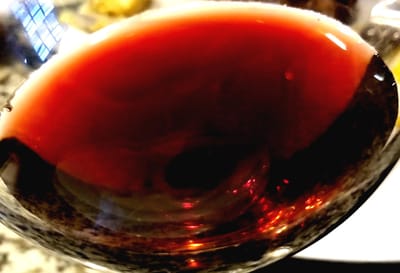
Most eyes should see the picture to the right as brick red with browning edges eventually heading to red brown! (See explanation below)
Other Rules of Wine
Aging
This is one of the more complicated topics of wine but I will make some summary judgments for you. These are the most general of rules. When I say you can keep 5 years, for example, I am using the vintage date as a starting point. And when I say you can keep it more time, that assumes proper storage at 52-55 degrees Fahrenheit.
- If the wine, red or white, costs less than $12.00 a bottle, it was meant to be drunk that night.
- If it costs between $12.00 and $20.00 a bottle, you can drink it that night or keep it (52 to 55 degrees F) for up to 5 years. Chances are roughly 10% like a good $30 a bottle; 0% like a $50 bottle.
- If it costs between $20.00 to $30.00 and is white, you can drink it that night or keep it (52 to 55 degrees F) for up to 5 - 7 years. If red, you can drink that night or for 10 to 15 additional years. For the $20-24 range, 25% chance it will taste like a good $30 bottle
- If it costs over $30.00 a bottle and is white (and not a Sauterne type of wine), you can drink it that night or keep it for, minimally, an additional 10 years. If red, you can drink that night or for, minimally, an additional 15 years.
I go into further detail in my blog post, Is Your Wine Aging or Aged?
Armed with these little bits of knowledge, you can enter a store with much more confidence.
Travel
Wine reacts to travel, whether that be travelling home from the store or travelling from another country on a container ship. Some general rules are that reds react more that whites and the older the wine, the greater need for rest. Say you just bought a 20 year old red at a store. Two questions have to enter in you mind. Where has it been for those 20 years before you thought of buying it (in temperature controlled storage for most of those 20 years or on the retail shelf at room temperature)? Second, if I do decide to buy it, in taking it home, will it be sufficiently agitated from the shopping cart rumbling across the parking lot and then in the car to not need repose?
There is a simple rule to follow: the more you spend on a wine, the more questions to ask yourself and the retailer or outlet where you are buying the wine. There is little worse than buying a very good wine and spending a lot of money only to discover you should have spent more time asking questions before you got home and discovered it is not in great shape. Worse yet is to discover the problems on opening the wine after many years of saving it. I remember my eldest daughter was born in Talence, France. I bought a bottle of one of the local, but expensive wines, Chateau Haut-Brion in the United States the year her birth, 1984, when the first shipments arrived in America. Both my daughters were born in supposedly bad years for Bordeaux, 1984 and 1987. Anyway, I knew that First Growth levels of wine still put out a good wine, just less of it, in off years and I gave it good storage. Fast forward to 2012 when we had a dinner to celebrate her engagement. I opened the bottle and wouldn't you know that was one of the best bottles I have consumed in my life and it could still take some age!
That is one reason why wine for tonight's consumption, generally, you would do well to buy it young. We use a term in the wine business called bottle sickness which describes this condition that lasts up to a month from bottling. There is the anecdote from Burgundy in France that a very old bottle should be moved from the cellar a step per day? (Preplan your dinners according to how many steps the cellar has)! A variation is when you agitate it too much. It is like seasickness in humans. There is nothing wrong with the wine. It just needs to rest up from its travels.
Corks
You can tell how long the winemaker thinks the wine will last by the cork used. The shorter the cork, the shorter the life expectancy of the wine. Beaujolais or a fighting varietal for ten bucks a bottle? Short cork. Fine Napa Cabernet Sauvignon or fine Bordeaux? Long cork.
Store the bottle on its side to keep the cork moist so that it maintains a good seal. Under $15 a bottle, some wineries are using other methods of sealing like screw caps and artificial cork. The results so far seem positive but you notice under $15 a bottle wines are not meant to be kept a long time. The jury is still out on the over $15 a bottle. See me again in 30 years when we have accumulated experience of the effect of storing wine by this method.
The other night I went to a wine tasting and pointed out that one wine was corked. Roughly 4% of wines from California have this issue to various degrees (similar problems exists wine from outside California). I knew what the problem was and insisted they open a second bottle of the same wine which everyone liked! Classic corked wines have a stinky, musty smell of old gym socks. There are varying degrees of "corkiness". If you suspect the wine is corked, stop right there and don't continue to drink the wine. If you only have drunk a small amount, take the wine back to the store for a new bottle. It is hard to go back (or ballsy), if you have drunk the bottle down.
Storage
Constant 52-55 degrees Fahrenheit and 80% humidity is optimum. The warmer or to a lesser extent the colder the wine gets, the shorter the lifespan. Never, for example, keep it for six months above 75 degrees, stored upright, drying out the cork. All three factors are bad for the wine. You are really taking a chance and the more expensive the wine, unfortunately the more likely the damage.
Avoid sunlight in storing wine.
Don't buy wine that has spent a long time in a store which turns the air conditioning off at night. The worst thing for wine is a constant fluctuation in temperature. If you buy it from a store with wine racks, at least take a bottle from the bottom of a rack, closer to the floor where it is cooler.
Wine is subject to all the laws of physics so that the warmer to temperature, the more it is affected by temperature -- any chemical reaction increases with heat.
If you are in the Sarasota area, a modern facility in every way for storing wine at a reasonable price has opened up that is run by super nice people off of Fruitville Road called Cellar Fifty -Five. Check it out!
If you live in an area with basements or cellars, you have some options which are not as expensive as building a full fledged wine cellar. If the walls and floor are exposed concrete or stone, 8 feet below the ground you will notice the temperature should be 45 -55 degrees, not allowing for heat produced by pipes, your central heating system etc. If you protect that area from the aforementioned heat sources, you will find it is the correct temperature for storing wine. Find a corner where two sides are exposed concrete walls and also you will have the concrete floor giving off coolness. Lay cement blocks (you don't even have to mortar them) to construct the 3rd and 4th walls of your little space. All that you will need then is a top cover (you can use anything which has insulating value like Styrofoam) and there you have it. Make the space appropriate to the number of bottles in your wine collection. If you have more than a few dozen good bottles, you have to do a little more than I suggest but this gives you a beginning idea. The principle is you want to conserve the natural cold of the cellar. If possible, you want to spend your money on wine, not wine storage.
Color
The color of a wine is generally an indication of how "fresh" it is in the bottle. It is a sign of how advanced in the aging process it is (oxidized) and you can usually tell if the wine is gone without tasting it. The following is the color change a wine undergoes over time. This chart is produced without examples of the color because I cannot be sure of the veracity with which it will rendered by your browser. Sorry.
Reds from purple to brown
Purple
Ruby red
Red
Brick red (this is the danger point for reds)
Red brown
Brown
Whites from Pale yellow green to Brown
Pale yellow green
Straw yellow
Yellow gold
Gold
Old gold
Yellow brown
Maderized
Brown
Sugar Levels vs Alcohol
Sugar Levels vs Alcohol is an old wine making debate. The grape inherently has a certain amount of sugar that the winemaker can ferment and turn into alcohol through the action of yeast. The longer the fermentation goes on, the lower the sugar and the greater the alcohol. Think of it as a see saw. This makes for an interesting dilemma for the winemaker: how much sugar to leave or how much alcohol is best? Wine making styles, both individual and regional, the grape used further complicate generalizations. Depending on the grape variety, where it was grown (receiving more or less sun), how long it was left on the vine etc etc etc. There are a myriad of factors at play making the process very interesting and very complicated.
A wine maker is dealing with more variables than a chef and there is more on the line with every decision they make. A chef gambles one meal at a time; the winemaker is playing with the whole "house" every day. Plus this stress goes on continuously throughout the year as they are involved in such decisions as the trellising used and whether to severely prune to let in more sun or less depending on the weather and so on. At first in sounded so romantic and then I looked at the salaries versus the levels of stress. It did not compute? I digress. But the most important decision for sugar levels in the grapes at harvest is the decision of when to pick the grapes ...that is a more of a gamble the more capricious the weather of your region. Bordeaux, for example, has found ways to adjust the wine if they had edgy weather but it is frankly, in that regard, generally a bit easier to make wine in California. I further discuss this issue in my blog post.
Helping Mother Nature
Wines also are made sweeter through the addition of sugars. Sometimes it is because the grapes in a bad year beg for it. Sometimes the public, having been now accustomed to the modern diet, demands that sweetness. The French allow winemakers to add, in a bad year, measured amounts of even sucrose from they ferment it out. The idea is to allow them to make a stronger wine in both alcohol and body in a bad year. California does not allow that but allows the addition of fructose (fruit sugar) generally even to create a flavor profile. Same difference?
Brix as an Expression of Potential Alcohol
One way to express the potential alcohol in a wine is a measurement called degrees brix. It looks at the grams of sugar, both glucose and fructose, contained in 100 grams of the total juice. Then you multiply the brix times a factor of .55 - .60 (generally .60 is used for white wines fermented at colder temperatures) and you arrive at the potential alcohol of the wine. For example, in 2013 the average brix of chardonnays harvested in California was 23.8 degrees. Since most Chardonnay today is cold fermented, we have .60 x 23.8 or 14.28 % potential alcohol. That doesn’t mean that the winemaker is going to make a wine with 14.28% but he could. The price he pays is that he has to ferment to total dryness or centrifuge so alcohol out. Below is how our sample chart of whites by varietal by potential sweetness in the grape.
Examples of Brix for Some White Wine Varieties
For the year 2013, California state averages, a Chenin Blanc was potentially the driest and Viognier was potentially the sweetest grape. I emphasize that that was for 2013 only!
Varietal | Brix |
Chenin Blanc | 20.1 |
Riesling | 21.9 |
Malvasia | 21.4 |
Semillon | 22.1 |
Pinot Gris/Pinot Grigio | 22.5 |
Sauvignon Blanc/Fume Blanc | 23.0 |
Gewurztraminer | 23.6 |
Chardonnay | 23.8 |
Viognier | 25.4 |
I go into the topic of sweetness/dryness in more depth in my blog post, "Which White Wine is Sweet or Dry?"
Botrytis

Leading to this Nectar of the Gods
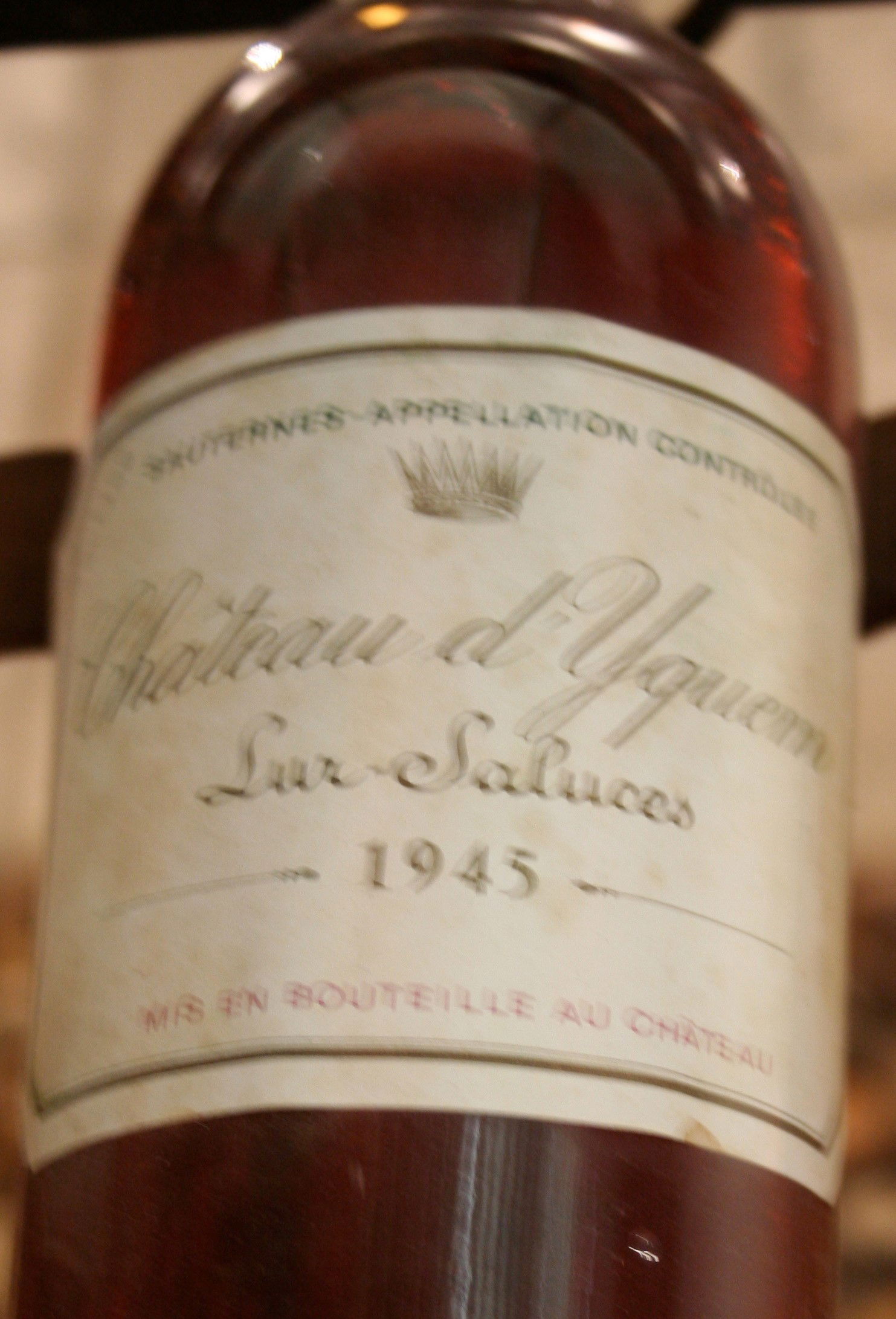
By Wine Varietal
By Wine Varietal
With American and other "New World" wines, the varietal name comes first and then comes the appellation(locality) name.
If you know where something comes from, you know something about the thing in question?.... Sort of like your parents wanting to know about the other kid's parents of the person you are dating? Once you know where the wine comes from, the more specific the location, the more you can pinpoint the location on a map, not only you will know everything about the grapes used, wine making practices, how it should taste etc. also the more the wine will cost you. Europeans used to drink the local wine and that kind of system was fine when you have to know a small number of local appellations for a similarly small number of local dishes which go with these wines. This system is not well adapted to the modern world which is more pluralistic and international tastes. At one distributor I worked for in Massachusetts, we carried 12,000 individual wines from all over the world.
A total neophyte in wine could cope with the more simplified and easier to mentally organize varietal names. It takes study to understand the appellation or Old World system Going varietal was a great boon to the New World. It was a great marketing move by New World Wineries. Is it easier to market thousand of brands from many entire countries with a system as simply as chardonnay than as Meursault, Puligny-Montrachet or Chassagne-Montrachet, small places in a very limited production in Cotes-de-Beaune France which is, you guessed it, chardonnay. The snob factor, however, in knowing European wines is hard to resist?
With European wines the appellation (locality) is more important and the varietal second --whether a varietal or a percentage of a varietal is either allowed or not depends on the rule for that appellation (locality).
This appellation based system is better for people like me with an academic bent, a former professor. It is like the old system of classification with index cards that every American child was taught to organize their thoughts, and then some. Think of classifying wine like I. France I.A Bordeaux I.A.1.Medoc 1.A .1.a Margaux Going back to chardonnay from Puligny-Monrachet mentioned above, we would have France, then Burgundy, then Cotes-de-Beaune , then Puligny-Monrachet then there is the further classification of wines from that region into hierarchies of different levels based on the actual vineyards: Premier Grand Crus, Seconds Grands Crus and Troisiemes Grands Crus. In other words, the "government" guarantees that if you use a certain appellation on the level, you will abide by the rules of that appellation, but I digress.
To help you decide, here are some common varietals arranged by body or mouthfeel :
Body/“Mouthfeel” of the More Common Varietals – Lighter to Heavier
These are broadest of generalizations but at least it is a frame of reference for beginners. This advice holds true especially if the wine is under $12.00 a bottle retail. Semillon, for example, is totally different if you are talking about an expensive French Sauternes, a rather sweet white wine. This is only a sketch to start building your wine knowledge.
Whites Lighter to Heavier
- Riesling Less Body
- Pinot Gris/Pinot Grigio
- Sauvignon Blanc/Fume Blanc
- Chardonnay
- Semillon to
- Malvasia
- Chenin Blanc
- Viognier
- Gewurztraminer More Body
Pink
- White Zinfandel
- White Merlot
- White Cabernet
Red Lighter to Heavier
- Beaujolais (Gamay) Less Body
- Pinot Noir
- Cabernet Franc
- Sangiovese
- Merlot
- Cabernet Sauvignon
- Barbera to
- Zinfandel
- Aglianco
- Nebbiolo
- Syrah/Shiraz
- Mourvedre
- Petite Syrah
- Malbec More Body
By Appellation
Simple rule by appellation stated again:
American wines are principally controlled by their varietal name whereas European wines by their place of origin or appellation. This means that American wines are, by way of example, marketed with the name of a varietal, like chardonnay, minimally have to have 75% of that varietal in the bottle. This is not to say that American wines totally ignore appellation. Just that it is lower down on the pecking order of wine priorities.
European wines tell you where the wine is from prominently on the label and must meet all the rules of that named on the label location. Again, they are controlled through local rules which are generally tighter the more precise and specific the place that appears as the appellation name on the label. These rules are less strict the more general the appellation. The "older" and more experienced that, for example California, becomes with the fact that the same grape grown in different locations produce different flavors, the more with time these generalizations mute over time. You can refer to my blog comments about this very issue.
For some reason this is a very difficult concept for the average wine drinker today. Think of it as follows: you live in a town or city, right? And that city is part of a county or the equivalent, and that county is part of a state. That state is part of a country. Each unit has wine laws that control the types of varietals authorized, rules of production, etc. The more localized and specific the appellation, generally the more predictable the wine is, of better quality., and commands a higher price.
Granted, a general rule for wines, both American and European, is that the more specific the location down to a specific vineyard, the more expensive the wine. Examples would be California vs the more specific Napa Valley a place within California or Bordeaux vs the more specific Margaux, a place within Bordeaux. You would never see Languedoc command the prices of Pauillac in Bordeaux but it is entirely feasible for one county in California to try to vie with another.
Using Chardonnay from Burgundy as an Example
Sticking with chardonnay from Puligny-Monrachet in Burgundy mentioned in the preceding web page, By Wine Varietal, there is also the classification of wines from that region into hierarchies of different levels based on the actual vineyards: Premier Grand Crus, Seconds Grands Crus and Troisiemes Grands Crus. There is a hierarchy institutionalized into law for how good the wine is and how it is to be made. No such thing exists in the New World. The New World is more flexible but leaves quality more up to the individual winery which the individual can increase or reduce whenever they want to, even during the vintage; remember, many wineries have more than one bottling. The New World is, as I say, a marketer's dream, an open slate on which to draw their vision ... for better or worse
Let's use the example of Puligny-Montrachet, Troisiemes Grand Cru, Le Champ Canet. Understand that the wine could pretend to any of these appellations I am about to give but unless there is some flaw that makes it necessary to have a lower appellation, for economic reasons you would obviously take the higher to which you are entitled. The difference in price is enormous.
- French table wine
- Burgundy wine
- Cotes-de-Beaune
- Meursault
- Meursault Le Champ Canet
(Higher levels of either, especially acidity, tends to aid longevity) High alcohol wines that are young, highly fruity and low in acids (due to either special fermentations that lower acids such as malolactic fermentation or not being fermented to dryness leaving behind fruit sugars) are the young wines the modern public seems to prefer. These wines are more difficult to store than wines which are higher in acids.
On the chart below, "H" signifies higher, "M" is medium and "L" tends to lower: remember...these are broad, relative generalizations.
For alcohol, typically Low = 9 - 11% , Medium = 11 - 12.5% and High = 12.5 - 14%
I. The Family of Wines Based Upon Chardonnay Grapes
| Origin | Alcohol | Acidity | Years for Best Drinking |
| - | - | - | |
| Australia | M / H | L / M | 2 to 4 |
| Chile | M / H | L / M | 2 to 4 |
| California | - | - | - |
| Mendocino | M / H | M / H | 3 to 5 |
| Napa | H | L / M | 2 to 5 |
| Sonoma | M / H | L / M | 2 to 5 |
| Santa Barbara | M / H | L / M | 2 to 5 |
| France | - | - | - |
| La Bourgogne (Burgundy) La Côte de Beaune | - | - | - |
| (Puligny, Montrachet, Meursault etc.) | L/M | M / H | 3 to 15 |
| La Basse Bourgogne (Chablis) | L/M | H | 3 to 15 |
| Chalonnais - Mâconnais (Pouilly, Fuissé, Mâcon) | L/M | M / H | 3 to 5 |
| Languedoc | M/H | L/M | 2 to 4 |
Ricks Picks
"Life is too short to drink badly made wine"
Each time I encounter a "find", I will notify you via Rick's Picks. More as a way for you to think like a savvy buyer than to imagine you might find the exact same wine at the exact or lower price than I found it. You probably will not discover exactly the same thing, but it will give you a good idea of what to look for in a wine and how to screen out the bad from the good: the strategies of finding a good wine at a good price.
I have developed a rating system which calculates on a 100 point scale. It ranks how good a buy the wine is at the time of tasting. I call it Rick's Value Score. This includes marks for appearance, varietal aromas, vinous aromas, bouquet , mouthfeel,, lack of off flavors, finish, and remaining life expectancy.
Why, you ask, did I bother to create this method of evaluating wine when perfectly good systems already exist such as Wine Spectator's 100 point scale? Simple, the Wine Spectator scale is useful for them but I wanted a cleaner system that was not so opaque to the beginning consumer.

Guigal Crozes-Hermitage 2015
(My friend Lloyd would add that the vintage was a winemaker's dream and that the vineyards are terraced so the vines do not get a lot of water which bolsters concentration. Marcel and his son Philippe are totally dedicated to quality.)
Recently tasted below--- Coppola Claret, Kirkland Russian River Pinot and Montecillo Riserva Rioja

Coppola 2015 Black Label Claret
To be frank I was expecting more from this wine. I worked in Bordeaux and created a Claret style wine for the Oxbridge Faculty Unions. Claret is a marketing term for the old style British Bordeaux Blend: in this case it adds the term Cabernet Sauvignon because at least 75% of the grapes are of that variety. There is a small amount of Petite Sirah which is not a Bordeaux varietal and I assume they added it to give the wine a little more body and depth? The rest is Petit Verdot. It is 13.5 % alcohol. I am behind in vintages since it is 2015 and now it is May 2019. I would expect a wine that costs over $15.00 to show a greater ability to age than this wine shows. Maybe I got an off bottle or one that was badly stored? Heck, it happens.
The wine manifested blackberry and cassis flavors as the marketing blurb says when first opened but lost them within six hours. It was a pleasant medium body blend but I suspect it would have been more supple if it had some merlot? Whatever the case, I would recommend drinking up and for the first six hours, you have a very drinkable Cabernet Blend. (Tasted in 2019) The wine scored an 86 on Rick's Value Score.
Kirkland Russian River Valley, Sonoma County Pinot Noir 2017
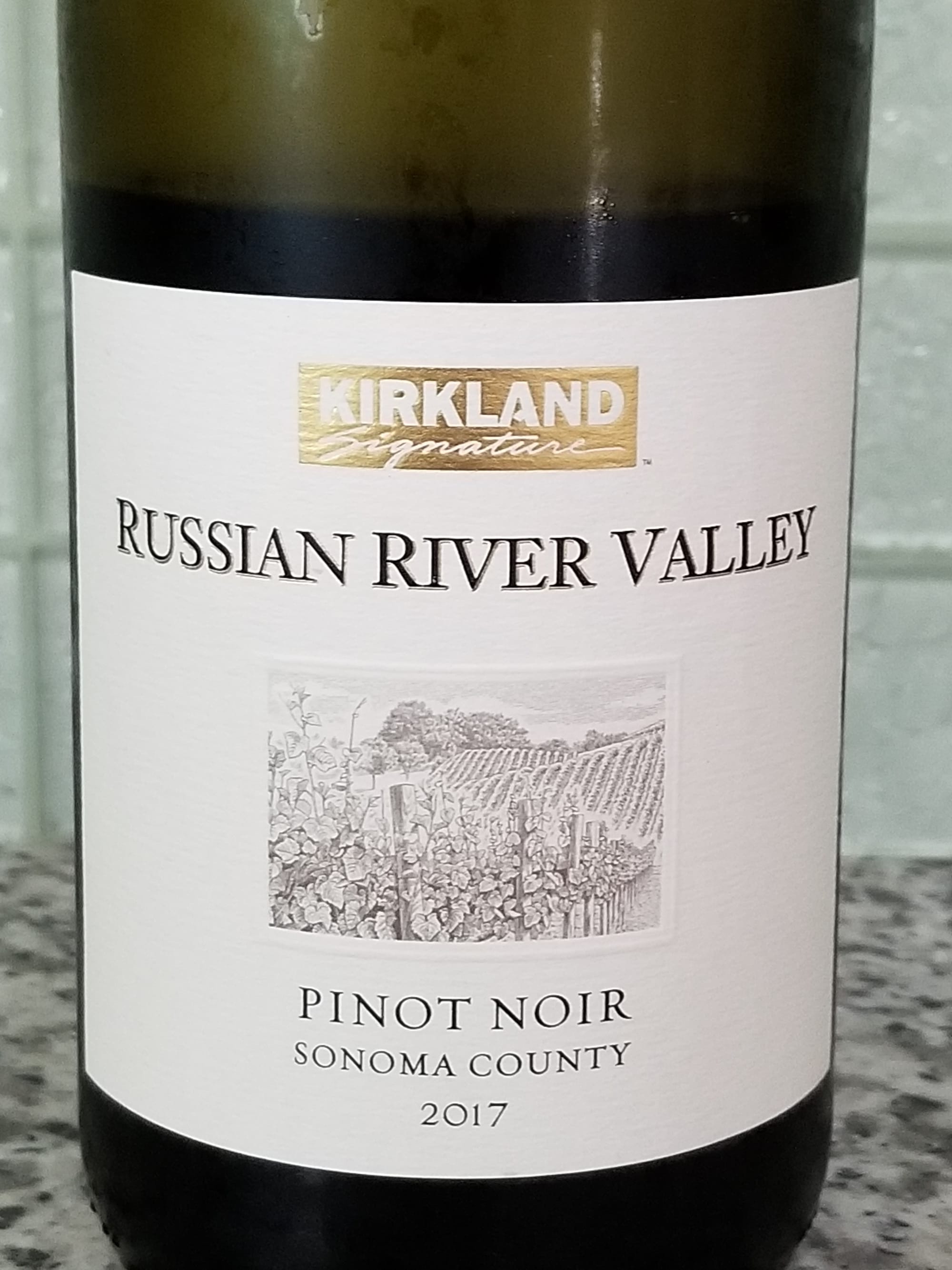
Any time you try a wine where the company doesn't own the vineyards, you have to add an additional level of caution. Kirkland is the Costco generic brand which is sometimes a great value when they hit the jackpot and are selling very good juice at a very good price and sometimes .... Since they don't own vineyards, you might like the wine the first time and not so much the next. Anyway, Russian River Pinots are generally pricey but they, in my estimation, are some of the best from California. They are not as big, jammy and high in alcohol as the ones from southern California. The wine is very approachable. It is on the lighter, more burgundian style. The alcohol was still a reasonable 13.9% and the flavors are pleasant, sort of bing cherry and red raspberry that screams, "Hey, I will taste great with anything else in the store other than strong meats like lamb or beef." (Tasted in 2019) The wine scored an 88 on the Rick's Value Score.
Montecillo Reserva, 2010 Rioja 
So here I was, minding my own business in a local big box store, when I stumbled upon a pallet of this wine. It was marked, $10.79 and with the instant $2.00 coupon, $8.79. My first thought was something has to be wrong with the wine. Good year, already aged for you, and it was a reserve. Normally you would expect to pay $18-$20 for the wine. Someone wanted to move through this wine quickly. Picked up a bottle and it was 13.5% alcohol. (Meaning it would go with food). So I bought a bottle to taste. Went home and immediately came back and bought a case.
The wine color was still red with no evidence of browning so it still has at least 3-5 years of life in it with good storage. It was elegant and smooth on the palate with just enough grip or tannins to still prove interesting. The bright fruit was muted by the oak. It still was good several days after opening stored in the fridge which is generally a good sign that it still has life. (Tasted in 2019) Wine Spectator got this one right and rated it 90 out of 100. The wine scored an 91 on Rick's Value Score.
1999 Chateau Les Tourelles de Longueville, Pauillac

The second label of Pichon-Longueville, this is a bottle my wife bought when visiting her family in France shortly after the vintage came out and I put it immediately in my cellar. She paid roughly 30 dollars and it is worth around 100 dollars today. A wine like that you buy and keep not so much as an investment but for drinking pleasure: and it did not disappoint. We had it with confit de canard, another tradition of the Southwest of France for Christmas dinner.
Second wines of Chateaux don't age well? In this case it still had 10-15 more years of declining life. The vineyard is next tp Chateau Latour. The wine was only just starting to brown at the edges ever so slightly. All the harshness of youth had abated and for a Pauillac, (majority grape Cabernet Sauvignon) it was elegant with tremendous body yet totally silenced tannins and acidity. It was in no sense flabby. The brooding fruit was still there and tastes of hints of cedar still lingered. We decanted the wine and it opened up fully after 2 hours. It was so easy to drink, the two of us put away the bottle in no time helped by the alcohol content being now probably 12 of 12.5%. At vinification it was 13%.
(Tasted Christmas Day, 2021). The wine scored a 93 on Rick's Value Score.
Contact
- 4430 Staghorn Lane, Sarasota, Florida 34238, USA
- We are happy to serve the Southwest Florida community, Boston, Massachusetts and Toronto, Canada areas. Please give as much detail on your needs Servivg the public and the trade. No issue is too small to handle!
Contact me by email: interested parties in engaging my services only, please. I spend much of my time in the Sarasota, Florida area. The rest of the time I am in New England and Ontario, Canada. I would be honored to work with you are the general public or a member of the trade. The intention of this website is to provide beginning knowledge that most other sites don't -- not to answer general wine questions by email. I would love to help the world to really understand wine and hopefully this site this will help a little in that regard. Coincidentally you might be intrigued enough to be curious about my services. At the moment I earn nothing from this site. Thank you for your attention.
Tasting Forms
Here you will find, eventually, three levels of forms you can use for tasting.
We start with Level One.
It is easily downloadable and can be adapted to suit your tasting if need be. I offer it free for your use.
Enjoy!
